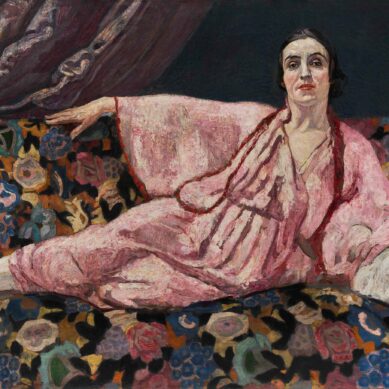You searched
Painter
Agostino Bosia
Are you interested in the sales or the purchase of his artworks?
We buy works of this artist
and of other painters and sculptors from the 16th century to the first half of the 20th century
The Berardi gallery offers a free and without obligation service for evaluation of ancient and modern art . To find your way in the art market, very complex and full of nuances, it is better to rely on a professional consultant who can answer fast and concretely to your needs. The clarity of the answers will resolve effectively the need to estimate or sell an asset.
Contact us immediately without commitment
Answers also in 24 hours:
Agostino Bosia
Agostino Bosia
Agostino Bosia was born in Turin in 1886. As a teenager, he frequented the studio of Giovanni Giani, who introduced him to the demands of realist painting and its personal and lyrical interpretations. He then attended the Accademia Albertina for a few months, but soon became impatient with the rigid academic atmosphere and left to continue his studies outside the institutional environment. He then began to paint en plein air, inheriting the melancholic ways of his master Giani, but also adopting an exciting and iridescent luminism that was well suited to the dense and colourful brushstroke and that came from the twentieth-century reinterpretation of Piedmontese landscape painters such as Fontanesi and Delleani.
The fundamental exchange with Bistolfi: Symbolist painting
An initial turning point in Agostino Bosia’s poetics came about as a result of his close contact with the sculptor Leonardo Bistolfi, who made him sensitive to Symbolist themes and introduced him to a nervous and predominant drawing line. At the beginning of the 20th century, the young painter began to exhibit at the Promotrici in Turin until 1946, collecting numerous critical successes.
In 1909 he participated for the first time in the Venice Biennale, where he presented the intense portrait My father. He returned in 1910 and 1912 with Veli della luna and Ritratto di mia madre. From 1913 to 1916 he took part in all the editions of the Roman Secession with works that undoubtedly left their mark on his Symbolist and Art Nouveau career: Black Lady, Afternoon, Along the River, Poplars and Moon, Flowers and Portrait.
A marked Secessionist vein
The Secessionist character of some works brings him close to certain iconographies of Gustav Klimt and Ferdinand Hodler. Agostino Bosia often developed images linked to a dramatic interpretation of the events of the Piedmontese working class or peasantry. He therefore tackled the social question through a dry drawing style, inherited from the Nordic Secessions, as seen in the Wayfarers at the 1920 Biennale and in the Garden at the 1922 Biennale, a symbolist frieze dedicated to the epic of life in all its sublime forms, from motherhood to suffering, love and death.
The same undulating and restless line can be found in the beautiful portrait of Leonardo Bistolfi exhibited at the 1922 Spring Florentine Exhibition. In the 1920s, 30s and 40s, he continued to participate in the most important national exhibitions: not only the Venice Biennale, but also the Fascist Fine Arts Unions and the Quadrennial Exhibitions in Rome. As time went by, landscapes became more present in Agostino Bosia’s work, such as Memory of a journey at the 1928 Biennale, Sea at Portofino, Rapallo at the 1929 Sindacale di Torino, but also The rivulet and the clouds at the 1932 Biennale and Piedmontese village and In the woods, shown at the 1935 Quadriennale in Rome. Even in his landscapes, the painter continued to give extreme importance to line and to treat colour with a strong two-dimensional syntax that was still in the secessionist style.
Elena Lago






